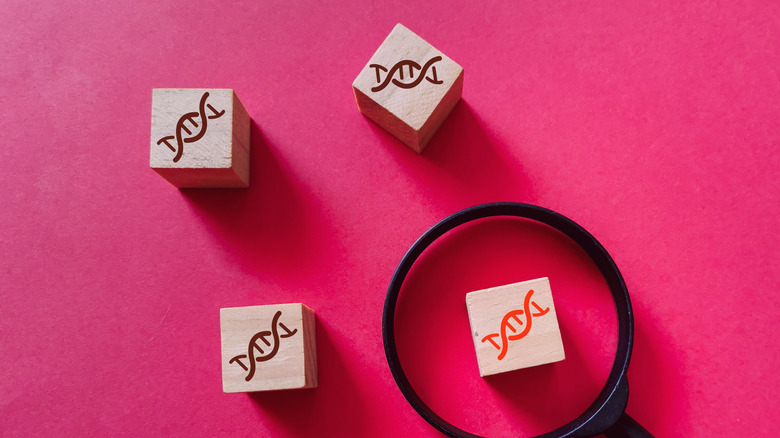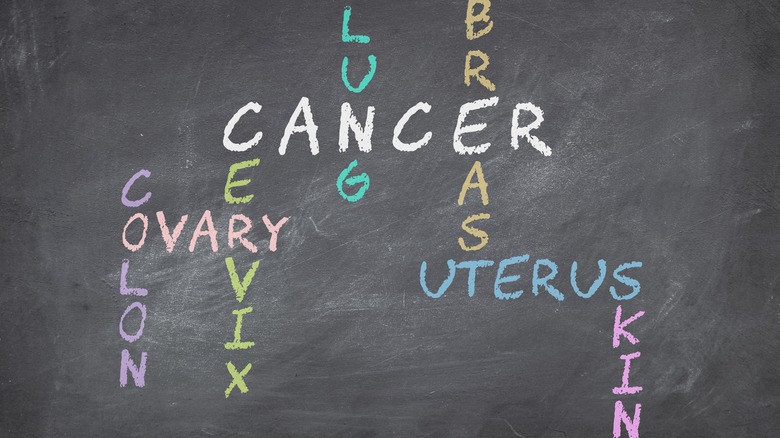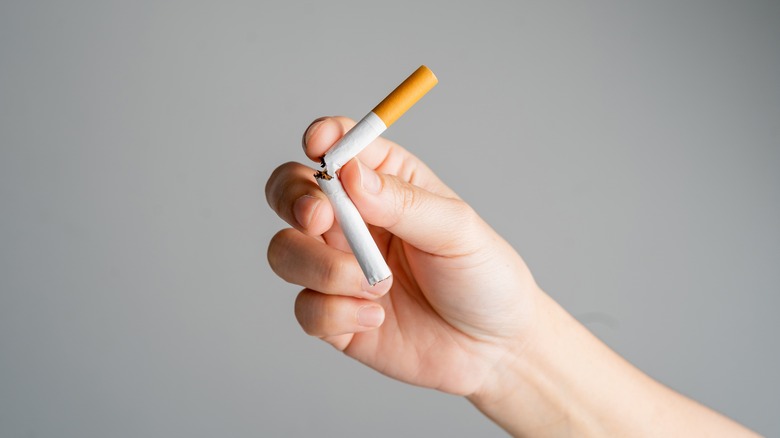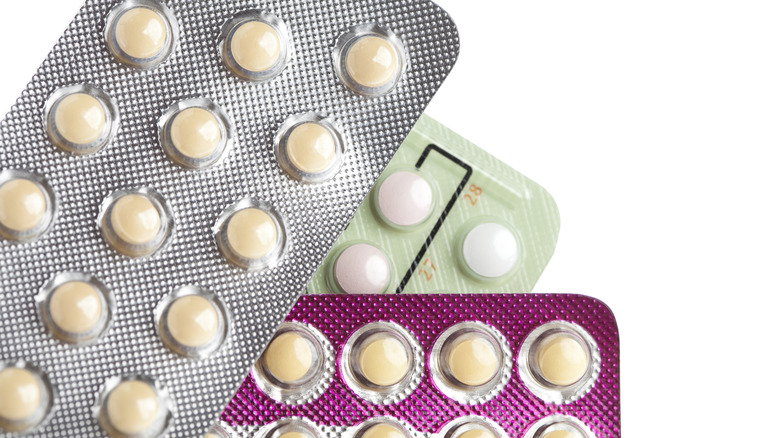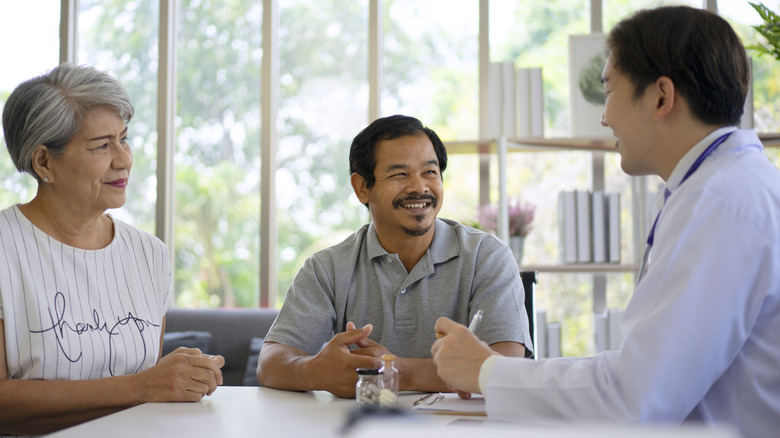Actionable Ways To Reduce Your Risk Of Common Cancers
Our health is one of the most important things we need to focus on, but it is also something that we commonly take for granted. When we feel good, we usually do not think about all of the things that can go wrong. But as soon as we start feeling bad, we look back on all of the things we could have done differently — and by then, it might already be too late.
The concept of preventive medicine has been around for thousands of years, but it was not until March of 2010 that the United States government enacted the Prevention and Public Health Fund, which aimed to lower health care costs throughout the country by promoting and funding programs that focus on preventive care and public health. Unfortunately, millions of Americans are still not receiving this type of care. There are many reasons, but according to the U.S. Department of Health and Human Services, the more common ones include cost, inability to get access to primary care providers, and lack of awareness.
There are many reasons why diseases occur, and thanks to countless research studies, we are now able to identify some of the risk factors associated with certain conditions. Some of these we cannot change (e.g., age, gender, genetics), while others we can (e.g., lifestyle habits). Preventive care focuses on the risk factors that we can change, so that we can protect ourselves against acute and chronic conditions alike, such as the flu, heart disease, and even cancer.
How does cancer affect the body?
Cancer has long been associated with feelings of dread and fear. This is most likely due to the fact that receiving a cancer diagnosis in the past was almost equivalent to receiving a death sentence. Fortunately, because of changes in health care practices and advancements in medicine, this is no longer the case with many types of cancer.
The main way of distinguishing cancer types from one another is through the location in which they originally developed. For example, breast cancer refers to cancer that begins in the breasts, while lung cancer begins in the lungs. In advanced stages, cancer can metastasize (or spread to different parts of the body), but it will still be classified according to where it initially formed (e.g., metastatic breast cancer, metastatic lung cancer).
In general, cancer occurs when certain cells in the body become genetically altered. As a consequence, these cells grow and multiply uncontrollably, creating a lump called a tumor. According to the National Cancer Institute (NCI), a tumor can be malignant (cancerous) or benign (noncancerous). The main difference between the two is that malignant tumors invade surrounding areas and have the ability to spread to distant areas of the body, while benign tumors do not. Once cancer develops, it can cause a wide array of problems, depending on its location. Common nonspecific signs and symptoms include weakness, unintentional weight loss, anemia, and unexplained skin changes (via WebMD).
Most common cancer types
According to the most recent data published by the Centers for Disease Control and Prevention (CDC), in 2020, the top 5 cancer types according to newly diagnosed cases were breast cancer in females, prostate cancer in males, lung and bronchial cancer, colorectal cancer, and uterine cancer. On the other hand, the top 5 cancer types according to mortality rate were lung and bronchial cancer, breast cancer in females, prostate cancer in males, colorectal cancer, and pancreatic cancer. Although the incidence rates reported in 2020 seemed to be lower than those prior to that year, it is suspected that this was affected by the COVID-19 pandemic, during which there was a huge burden on the US healthcare system, and many preventive care services were either delayed or postponed. This is further supported by the fact that the trend in cancer deaths remained somewhat unchanged.
On the other hand, per the World Health Organization (WHO), the most common newly diagnosed cancer types in 2020 throughout the world were breast cancer, lung cancer, colorectal cancer, prostate cancer, and skin cancer. Meanwhile, the top 5 most common causes of cancer deaths were lung cancer, colorectal cancer, liver cancer, stomach cancer, and breast cancer.
Cancer remains one of the leading causes of death in the United States and worldwide. Numerous efforts have been made to decrease this burden, but one of the most important steps to take begins with us and the way we live our daily lives.
Do not smoke
If there is one habit that you should stop doing (or should never do), it is smoking. Smoking kills nearly 9 million people every year; most of these deaths are primarily caused by the harmful effects of tobacco, with a small percentage attributed to exposure to secondhand smoke (per Our World in Data). Smoking can not only lead to cancer, but also cause other serious health conditions like chronic obstructive pulmonary disease (COPD), asthma, stroke, heart disease, diabetes, vision problems, and pregnancy complications.
As explained by Medical News Today, the longer you are exposed to toxic substances found in cigarettes, the higher your risk of developing cancer. This is because some of these toxins are known to cause DNA damage, which leads to genetic mutations that may eventually lead to cancer. Additionally, because smoking involves inhaling and exhaling these substances, the airways are directly exposed to them, making the lungs the primary target of damage. Smoking also puts your body in a state of chronic inflammation and oxidative stress, and significantly weakens your immune system.
Yale Medicine adds that other forms of tobacco (e.g., smokeless, cigars, pipes) are no different, and can all lead to similar problems associated with cigarette smoking. Meanwhile, vaping or using electronic cigarettes has only been around recently and has yet to be extensively studied. However, early research shows that it is not as harmless as previously suggested.
If you or anyone you know needs help with addiction issues, help is available. Visit the Substance Abuse and Mental Health Services Administration website or contact SAMHSA's National Helpline at 1-800-662-HELP (4357).
Avoid drinking alcohol
According to the Dietary Guidelines for Americans, adults 21 years and older who choose to drink should limit their alcohol intake to one drink a day for women, and two drinks a day for men. This limit resets daily; you should not drink more than one to two drinks per day, even if you do not drink every day.
However, like with any other unhealthy habit, it is a lot better to not drink alcohol at all. Studies show that even in moderation, drinking alcohol can still increase your risk of developing cancer, and may also increase your risk of death caused by chronic conditions like heart disease. Additionally, specific groups of people should avoid drinking alcohol as much as possible due to its harmful effects. These include women who are pregnant, anyone below 21 years old, taking certain medications, or with certain health conditions, and those recovering from alcohol use disorder.
Among the dangers of alcohol consumption is that not a lot of people are aware of its devastating consequences. The body can convert alcohol to acetaldehyde, a substance with the potential to cause DNA damage. Alcohol can also interrupt the absorption of certain nutrients and vitamins, damage internal organs, increase estrogen levels, and make it easier for other harmful substances to affect the body. Per the American Cancer Society, as much as 6% of all cancers and 4% of cancer deaths are directly related to alcohol use. The most commonly associated cancers include those of the gastrointestinal tract, voice box, and breast.
Maintain a healthy weight
Obesity is a rising problem in the United States. It is defined as having a body mass index (BMI) of greater than or equal to 30.0 in adults. According to the CDC, between 2017 to early 2020, 41.9% of adults and 19.7% of children and adolescents in the United States were classified as obese.
Obesity goes hand-in-hand with numerous health problems. Per the National Institute of Diabetes and Digestive and Kidney Diseases (NIDDK), it is associated with an increased risk of heart disease, high blood pressure, stroke, diabetes, obstructive sleep apnea, fatty liver disease, liver failure, gallbladder problems, kidney disease, osteoarthritis, pregnancy complications (e.g., preeclampsia, gestational diabetes), and certain cancers. It can also lead to low self-esteem and the development of mental health problems like depression.
Obesity contributes to the development of certain types of cancer by creating a state of chronic inflammation, as well as causing significant metabolic changes in the body. According to authors of a 2020 study published in Cell, these cancers include thyroid, liver, colorectal, pancreatic, and uterine cancer, all of which have experienced a rise in incidence over the past several years. Additionally, they found that when placed in a high-fat environment, tumor cells are able to make use of fat as fuel for their growth while at the same time depriving immune cells of this source of energy. Immune cells capable of attacking tumor cells decrease in number, therefore further promoting the growth of tumors.
Exercise regularly
Chances are you have already been told numerous times how important regular exercise is for your overall health — and there is good reason behind it. According to the National Institute of Aging (NIA), regular physical activity has been proven to improve strength and balance, increase energy levels, boost your mood, help you sleep better, maintain a healthy weight, and possibly protect against cognitive decline. Exercise can also prevent or control chronic diseases such as high blood pressure, heart disease, stroke, diabetes, arthritis, osteoporosis, and certain types of cancer.
According to a 2020 review in Medicine & Science in Sports & Exercise, there is strong evidence that physical activity reduces the risk of breast, colon, uterine, esophageal, gastric, bladder, and renal cancer. There is also moderate evidence that it reduces the risk of lung cancer. The American Cancer Society adds that exercise can protect against cancer by regulating hormone levels, maintaining a healthy immune system, and preventing obesity. Interestingly, there is also increasing evidence that suggests that the longer you spend sitting down, the higher your risk of certain types of cancer. Actively moving around reduces the amount of time you spend being sedentary, likely decreasing your risk of cancer. This is good to keep in mind in certain scenarios. For example, if you are in a situation where you can choose between taking the elevator or the stairs, it might be a good idea to take the stairs, provided that you are physically able to do so.
Watch your diet
The popular saying "You are what you eat" conveys a pretty straightforward message: A person's diet greatly influences their overall health. Apart from exercising regularly, eating a balanced diet is another proactive approach you can take to give yourself the best chance at staying healthy. According to Medical News Today, following a healthy diet can decrease your risk of heart disease and cancer, improve your mood and memory, help with weight loss, strengthen bones, help with sleep, aid in metabolism and digestion, and more.
Per Healthline, your risk of developing cancer can increase or decrease depending on what you eat. Certain foods that, in high amounts, may increase your risk include sugar, refined carbohydrates (like those found in white bread and candies), burnt food, and processed meat. On the other hand, eating more foods that contain substances with anti-cancer properties may help decrease your risk. These include fruits, vegetables, spices, garlic, nuts, flaxseed, beans, legumes, fish, and olive oil. It is important to note, however, that no single food has been linked to directly causing or preventing cancer, and each person may differ in terms of what diet is best for them. But as a whole, it has been observed that having healthy eating habits can reduce the risk of cancer.
According to a 2020 article published in the BMJ, cancer types whose development may be influenced by a person's diet include those of the gastrointestinal tract (e.g., oral, esophageal, stomach, liver, colorectal), lung, breast, and prostate.
Pay attention to your sugar intake
Diabetes is a major health concern in the United States. There are two main types: type 1 and type 2. According to the CDC, around 95% of diabetics have the latter type. Type 2 diabetes occurs when the body becomes insensitive to insulin, which is the hormone responsible for processing sugar. Sugar then accumulates in the body, leading to a wide range of complications. Uncontrolled blood sugar levels can affect virtually any part of the body, particularly the nerves, eyes, heart, kidneys, and feet. Common causes of type 2 diabetes include being overweight or obese, having a sedentary lifestyle, and a person's genetics to some degree (per the NIDDK).
In addition to the already-long list of potential problems that can happen, the MD Anderson Cancer Center also states that people with diabetes are also at an increased risk of developing certain types of cancer (i.e., bladder, breast, colorectal, endometrial, liver, and pancreatic). Although the exact mechanism is still unclear, it is possible that the abnormal insulin levels, chronic inflammation, coexisting obesity, and elevated blood sugar levels seen in people with diabetes play a significant role. This theory is further supported by a 2019 review published in the Journal of Research in Medical Sciences, where the author also added that the increased oxidative stress seen in diabetes can cause damage to DNA, potentially leading to genetic mutations that may result in the development of cancer.
Observe proper sun safety practices
Any time you go out in the sun or use an artificial tanning bed, you are exposing yourself to ultraviolet (UV) radiation. To some extent, exposure to UV rays can be somewhat beneficial for us. When sunlight hits our skin, it initiates a reaction that allows our body to produce vitamin D, which is a nutrient that plays an important role in keeping our bones healthy. Getting 5 to 15 minutes of sun exposure twice or thrice a week is usually enough for us to get adequate amounts of vitamin D. However, spending too much time under the sun can lead to bothersome, permanent, or even deadly health problems, including wrinkles, sunburn, blindness, and skin cancer (via the CDC).
Even though the sun's rays have many harmful effects, this does not mean that you cannot go out in the sun and enjoy your favorite outdoor activities. There are many ways you can protect yourself against conditions related to UV exposure, including using sunscreen, wearing clothes with UV protection factor (UPF), staying under the shade (especially between 10 o'clock in the morning and 4 o'clock in the afternoon), wearing sunglasses, and avoiding looking directly at the water, sand, or snow. For sunscreen to be effective, choose ones that are broad-spectrum, have a Sun Protection Factor (SPF) of 30 or more, and are water-resistant. You should also reapply sunscreen every two hours (per Johns Hopkins Medicine).
Follow safe sex practices
Some types of cancer develop due in part to a person's sexual behaviors. Human papillomavirus (HPV) is an infection that can cause warts to form in different areas of the body. Some strains specifically target the genitals and other mucosal surfaces, which can later progress to cancer (via Cleveland Clinic). Specifically, HPV has been shown to cause cancer of the vagina, vulva, cervix, penis, anus, and back of the throat. Although HPV is considered a common infection, according to the American Academy of Family Physicians (AAFP), some people are more at risk of acquiring it compared to others. These include people who have had sex at an early age, do not use barrier contraceptives during sex, have multiple sexual partners, have a history of other sexually transmitted infections (STIs), and/or have HIV.
Similar to the cancer types mentioned above, having fewer sexual partners and becoming sexually active later in life also seem to decrease the risk of prostate cancer. In addition, authors of a 2018 meta-analysis published in The Journal of Sexual Medicine found that moderately frequent ejaculation (i.e., 2 to 4 times a week) may also have a protective effect against prostate cancer. To date, there is still insufficient evidence to support this. However, WebMD states that since ejaculation through masturbation or safe sex is typically not directly associated with any health issues, it can be safe to assume that doing it more frequently will probably not cause you harm.
Avoid taking unnecessary hormones
Hormones are chemicals that help regulate several processes throughout the body. Typically, our bodies do a good job of determining the amount of hormones we need depending on the situation. But sometimes, they can get overwhelmed and put us in a state of hormonal imbalance. Women are particularly susceptible to hormone imbalances, relating to the menstrual cycle and menopause. Some women may want to begin hormone replacement therapy (HRT) to help ease the symptoms of menopause. However, it has been found that taking combined HRT (estrogen and progesterone) increases the risk of breast cancer, while estrogen-only HRT increases the risk of uterine cancer. Interestingly, because long-term exposure to estrogen and progesterone has been linked to breast cancer, women who started their menses early, had menopause late, had never given birth, or had their first pregnancy later in life, are believed to be at a higher risk of developing breast cancer (per the NCI).
The MD Anderson Cancer Center adds that taking combined birth control pills is associated with a slight risk of developing breast and cervical cancer, but a lower risk of ovarian and uterine cancer. Because of the risks, it is important to talk to your healthcare provider to determine if hormone therapy is right for you. There are safer ways to control menopause symptoms and prevent unintended pregnancies that will not increase your risk of developing cancer.
Be aware of hazardous substances
The air that we breathe is no longer the same as it was before. It has been slowly but progressively getting more polluted with substances that pose a major threat to our environment and harm our health. Unknowingly, air pollution contributes to the deaths of millions of people every year (per Our World in Data).
The dangerous thing about hazardous substances is that we typically do not see them, or even know that they are there. Exposure to fumes produced by burning wood or coal can cause lung cancer, as can exposure to the gas radon, which can be found naturally in soil, rock, and mines. Hazardous exposures that lead to cancer most often occur in a person's workplace, especially occupations that involve exposure to asbestos, arsenic, benzene, coal, formaldehyde, inorganic acid mists, nickel, pentachlorophenol, radiation, soot, tar, and wood dust. The naturally occurring chemical arsenic can also be found in drinking water, and when consumed in large amounts, it can lead to bladder, lung, and skin cancer (per the Cancer Atlas).
In addition, per a 2019 article from Ecancermedicalscience, synthetic substances known as endocrine-disrupting chemicals (EDCs) have recently been gaining attention for their ability to disrupt hormone levels and metabolic processes in our bodies, indirectly increasing our risk of cancer. Unfortunately, a lot of these chemicals have not gone through appropriate testing to determine if they are safe for use, yet can be found in the food we eat and the self-care products we use daily.
Get vaccinated against HPV and hepatitis B
Out of all the vaccines that we are encouraged to get throughout our lives, there are two that are very important in reducing our risk of developing cancer.
The HPV vaccine is said to be able to protect against more than 90% of all HPV-related cancers. It can be given to children as young as 9 years old, and is recommended for adults 26 years or younger. There is not much benefit to giving it to adults between 26 and 45 years old, but they may still choose to get it if they have never gotten it before. It is a 2-dose series if you received your first dose before you turned 15 years old, given 6 to 12 months apart. If you received your first dose at 15 years old or older, you need a total of three doses, with the second dose given after one to two months and the third dose after six months (via the CDC).
On the other hand, the hepatitis B vaccine is given to reduce the risk of hepatitis B infection, which can cause chronic liver disease that may eventually lead to liver cancer. The vaccine must be given to all infants, children younger than 19 years old who have never gotten the vaccine, adults between 19 and 59 years old, and adults 60 years and older who have risk factors. The number of doses and vaccination schedule largely depend on a person's age, their vaccination history, and the type of hepatitis B vaccine that is used (per the CDC).
Follow your doctor's recommendations for cancer screening
Screening tests are available for certain types of cancer. For breast cancer, screening is only done in women, beginning at 40 years old and ending at 74. It is done every two years via screening mammography (via Cleveland Clinic). For cervical cancer, screening begins at 21. A Pap smear every three years is required between 21 and 29, while a Pap smear and HPV testing every five years are required for women 30 years and older. Screening can be stopped at 65 if you have had adequate testing in the past with normal results.
Colorectal cancer begins at 45 for both men and women, but you may need to get it earlier if you have certain risk factors. It can generally be done via colonoscopy (good for 10 years if negative) or using fecal tests (good for three years if negative). Lung cancer screening is only done for current or past heavy smokers between 50 and 80 years old. It is done every year using a specific type of CT scan of the chest (via WebMD).
Men can be screened for prostate cancer using the PSA test, but this is no longer recommended routinely as it has been shown that early detection of prostate cancer through the PSA test does not increase survival. Additionally, prostate cancers detected using PSA have also been found to be nonfatal. Checking your skin for any changes can also be a good way to get ahead of skin cancer. Once located, precancerous lesions can easily be removed before they turn into cancer.


